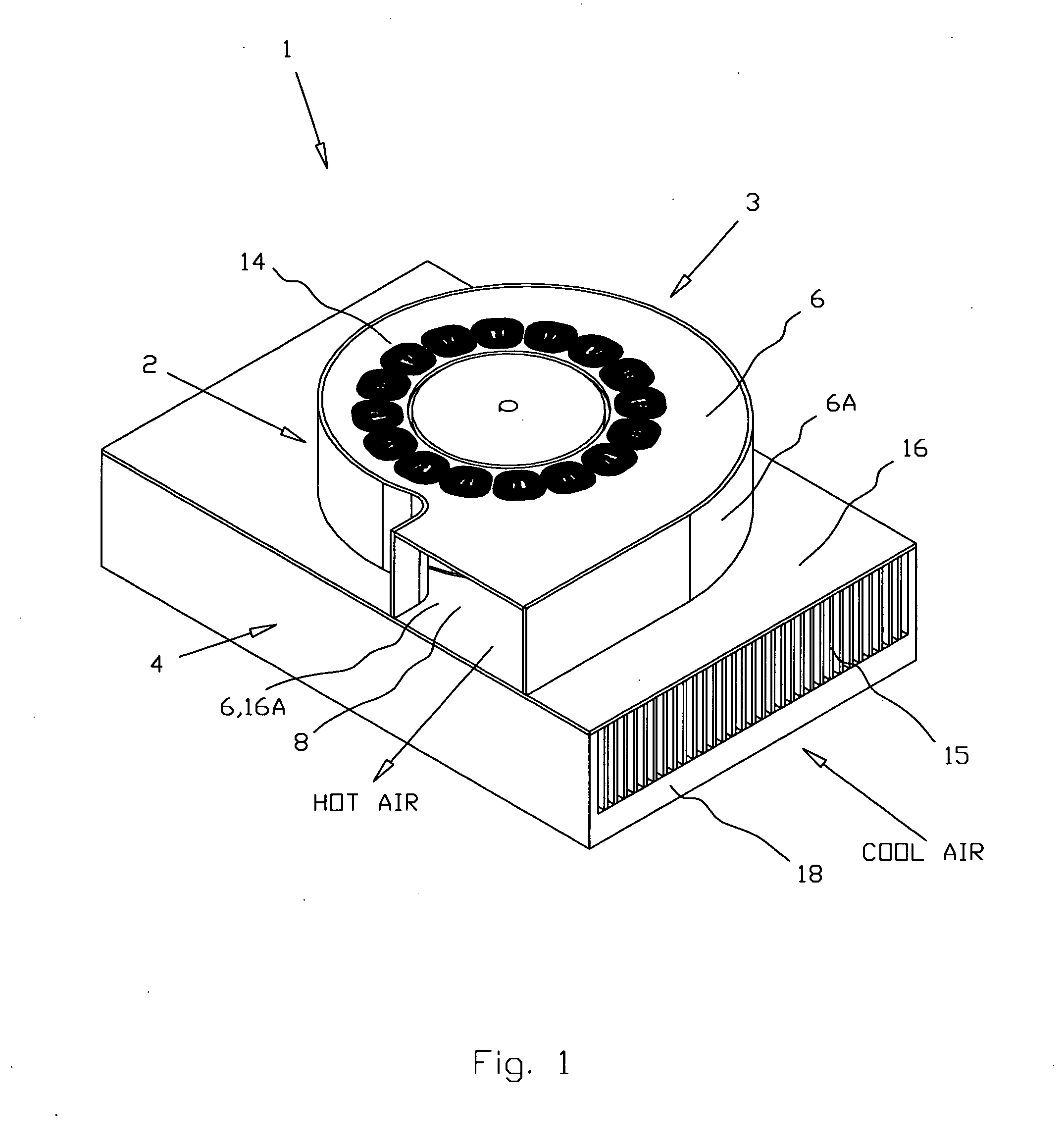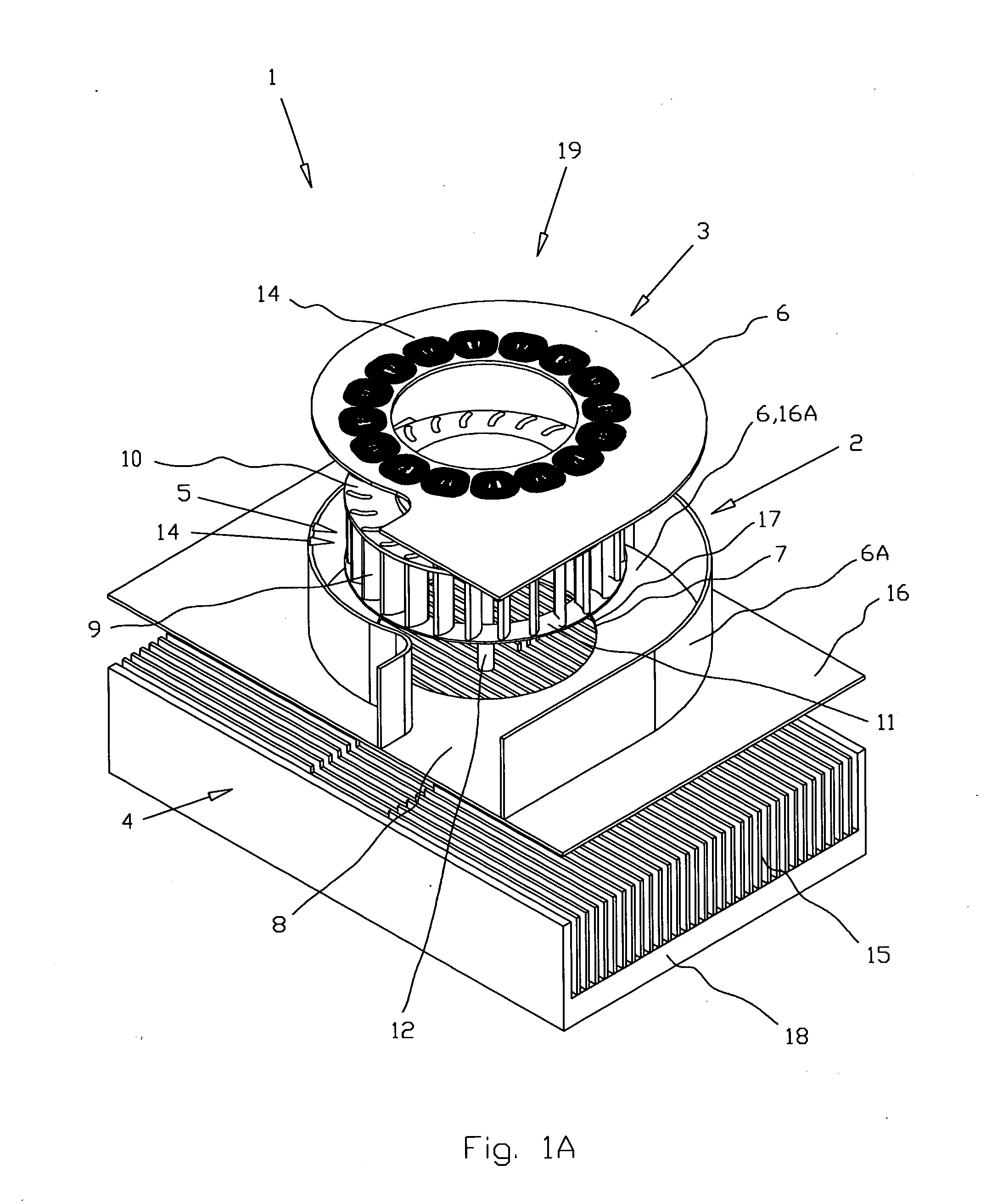Integrated blade cooler for electronic components
a technology of electronic components and integrated blades, which is applied in the direction of machines/engines, stators, liquid fuel engines, etc., can solve the problems of requiring improved systems for heat removal, large power supplies and auxiliary components that generate increased amounts of heat, and premature device failure, so as to reduce the thickness of the cooler, and improve the blower and thermal efficiency.
- Summary
- Abstract
- Description
- Claims
- Application Information
AI Technical Summary
Benefits of technology
Problems solved by technology
Method used
Image
Examples
Embodiment Construction
[0028] Claimed invention will be described in detail below with reference to the accompanying drawings. FIGS. 1-6A show embodiments of the present invention.
[0029] The integrated blade cooler 1 (FIGS. 1-6A) for electronic components (not shown) in all embodiments comprises a blower 2, an electric drive 3, and a heatsink 4. The blower 2 comprises a radial impeller 5 and a casing 6 with an inlet 7 and outlet 8. The radial impeller 5 that is made as a drum type impeller comprises magnetic blades 9, a backplate disk 10, a shroud 11 and an axis of rotation 12. The electric drive 3 comprises a magnetic rotor 13 and a stator 14 made as printed circuit board. The heatsink 4 comprises heat-exchanging means 15 clothed in a cover plate 16 with an outflow opening 17, and the base 18 providing the thermal contact with said electronic components and with the heat-exchanging means 15. The part 16A of the cover plate 16 is made as a part of the casing 6. As a result, outflow opening 17 of the heat...
PUM
 Login to View More
Login to View More Abstract
Description
Claims
Application Information
 Login to View More
Login to View More - R&D
- Intellectual Property
- Life Sciences
- Materials
- Tech Scout
- Unparalleled Data Quality
- Higher Quality Content
- 60% Fewer Hallucinations
Browse by: Latest US Patents, China's latest patents, Technical Efficacy Thesaurus, Application Domain, Technology Topic, Popular Technical Reports.
© 2025 PatSnap. All rights reserved.Legal|Privacy policy|Modern Slavery Act Transparency Statement|Sitemap|About US| Contact US: help@patsnap.com



